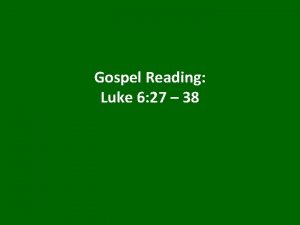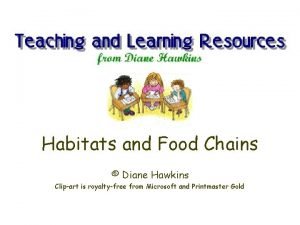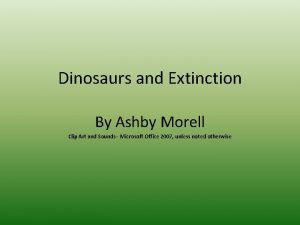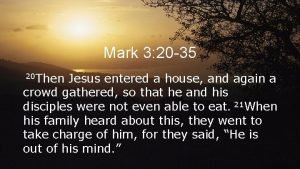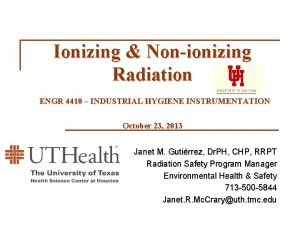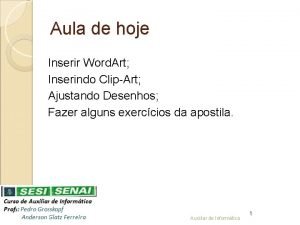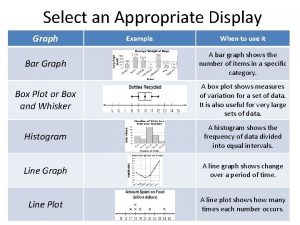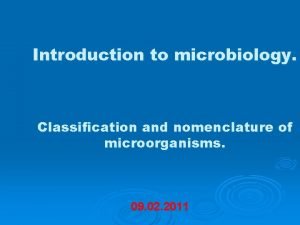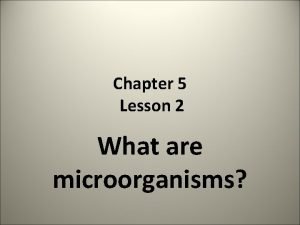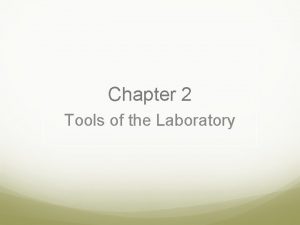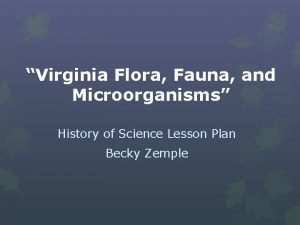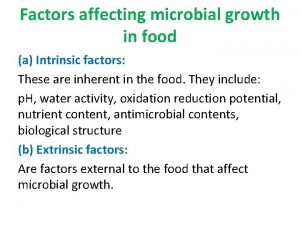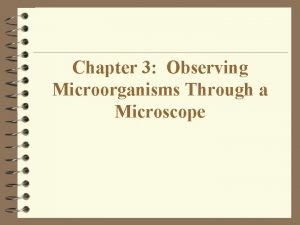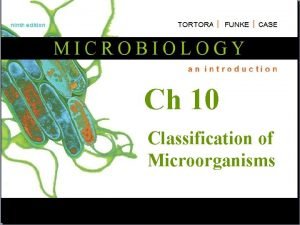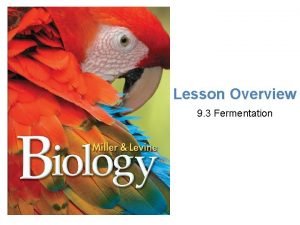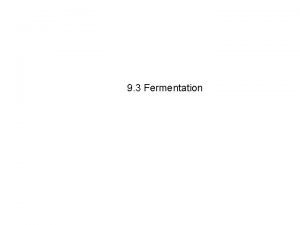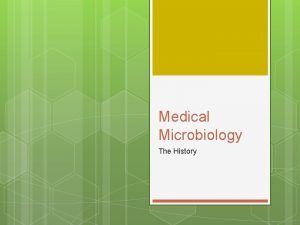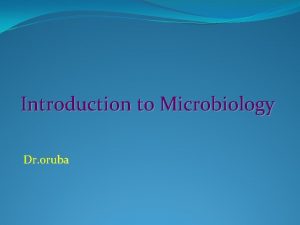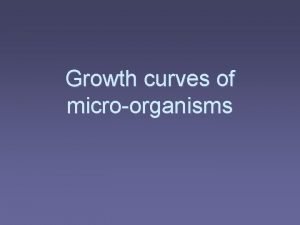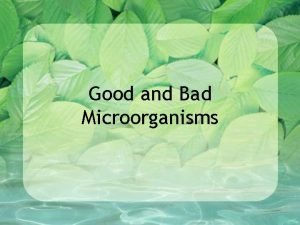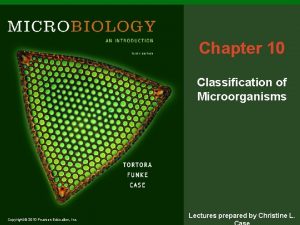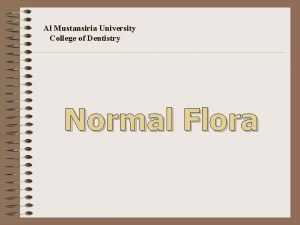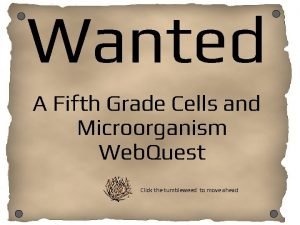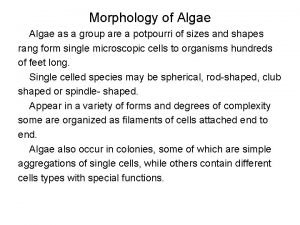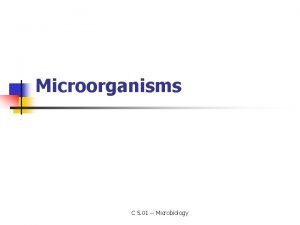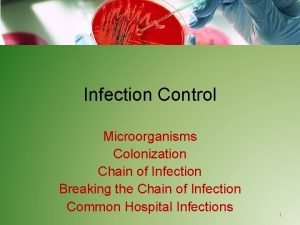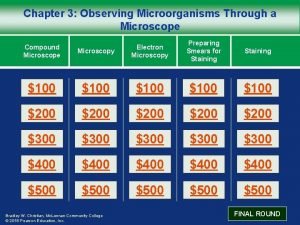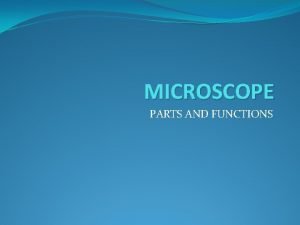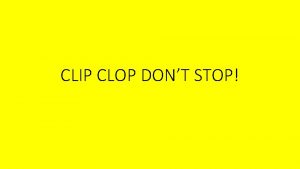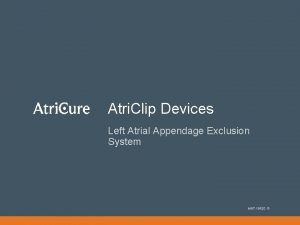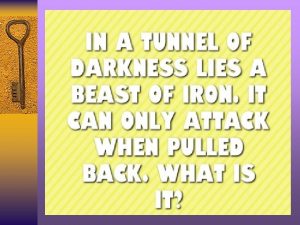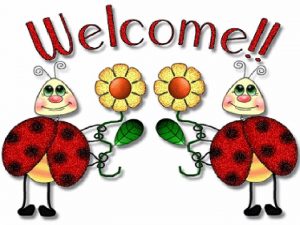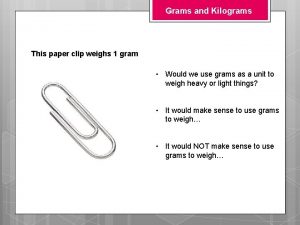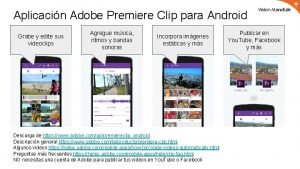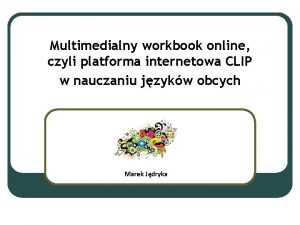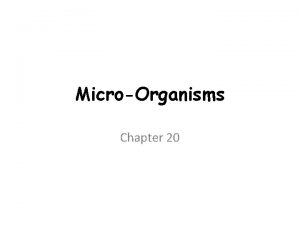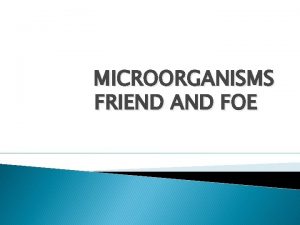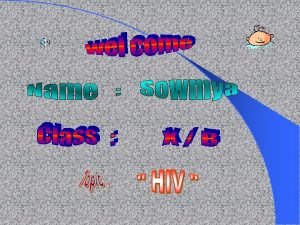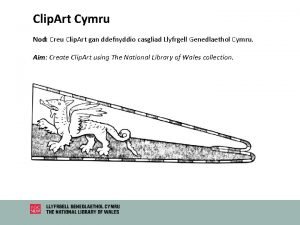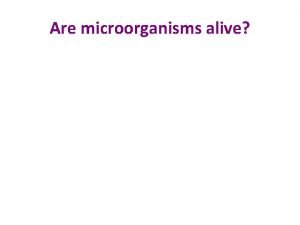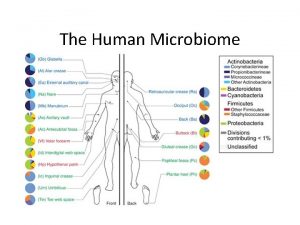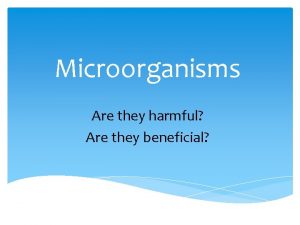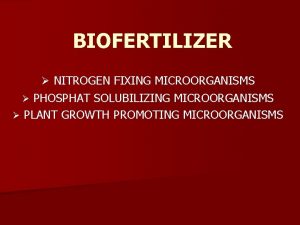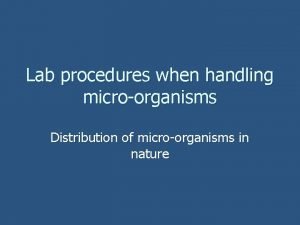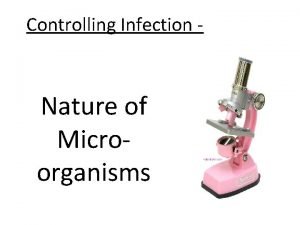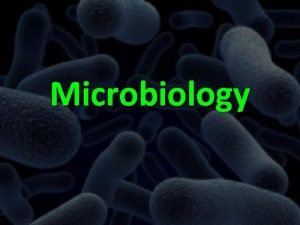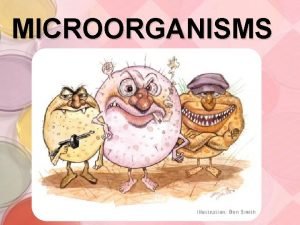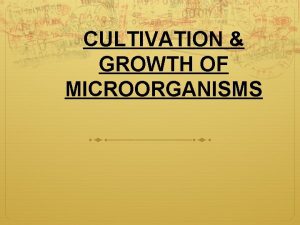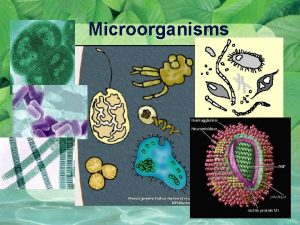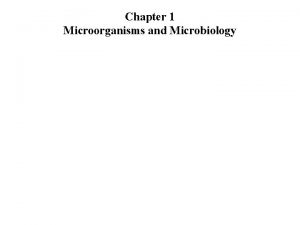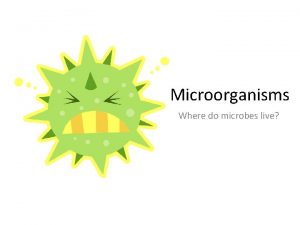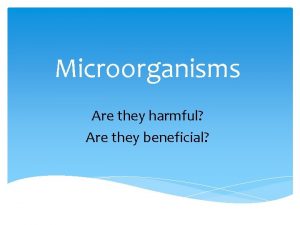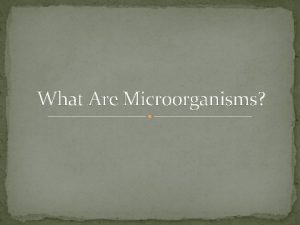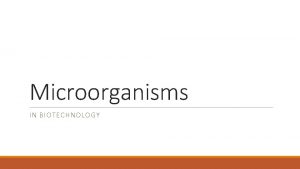Key area 6 Microorganisms Appropriate Clip art to

































































- Slides: 65

Key area 6 Microorganisms

Appropriate Clip art to topic Properties of Microorganisms and Use in Industries Learning Intention: Find out the properties of microorganisms. Success Criteria: Be able to state what a microorganism is. Be able to describe how a microorganism divides. Be able to give examples of what microorganisms can be used in industry.

Watch and Listen • Microorganism Video Clip

What is a microorganism? • A microorganism is a single celled organism, also called a unicellular organism. • They are found almost everywhere you can think of on Earth. • Some can move about by themselves. • They exist in huge numbers. There about 5 million bacteria on just one square centimetre of your skin!

Types of microorganisms • There are many different types of microorganisms. • The main ones you may have heard of are: bacteria viruses yeast

Other examples • Other examples of microbes include: Amoeba Paramecium Euglena

Activity 1 • Microbes is another name for microorganisms. • Microbes are too small to be seen with our eyes alone. • Take a look at some microbes under the microscope. • Draw what you see.

Rapid Growth • • Microbes can reproduce rapidly (very quickly). Some can even reproduce every 20 minutes! They do this by dividing. In some microbes like yeast this is done by a process called budding.

Budding in yeast

Uses of microbes • Video clip on how we use microbes


Homework Task • Choose one of the microbes from your list in your notes. • Research your microbe. • Present as much information as possible about that microbe on a piece of A 4 paper. • You should include a drawing or photo.

Appropriate Clip art to topic Properties of Microorganisms and Use in Industries Learning Intention: Find out the properties of microorganisms. Success Criteria: Be able to state what a microorganism is. Be able to describe how a microorganism divides. Be able to give examples of what microorganisms can be used in industry.

Starter Activity: Make as many words as you can from the term “microorganism” Words must be at least 3 letters long. Names of people do not count!

Appropriate Clip art to topic Properties of Microorganisms and Use in Industries Learning Intention: Investigate how microorganisms are used in the production of bread. Success Criteria: Be able to name the microorganism used in the production of bread. Be able to describe the role of microorganisms in the production of bread.

Microbes all around us • Some microbes are harmful and can cause diseases.

Useful microbes • Many microbes are harmless to the body. • Some microbes are really useful and can be used to make products that we like to eat and drink. • Some microbes can also be used to make alternative fuels. • Others help us to get rid of harmful sewage.

Fermentation • Fermentation is the name given to the process by which yeast converts sugar (its food source) into carbon dioxide and alcohol when no oxygen is available. YEAST SUGAR CARBON DIOXIDE (GAS) + ALCOHOL

Making Bread Dough • Yeast is a single celled fungus that is used in bread making. • Yeast is mixed with flour, sugar and water to make a dough. • If the dough is left in a warm place the yeast produces two products: – carbon dioxide gas which makes the dough rise. – ethanol (a type of alcohol which evaporates).

Watch and Listen • Fermentation Video Clip Bread dough before rising Bread dough after rising

Activity 2 • You will now carry out an investigation to make bread dough.

Investigating the rising of dough • We are going to investigate the difference between using live yeast and dead yeast in bread making.

Investigating the rising of dough 1. 2. 3. 4. Add 10 spoons of flour to 2 plastic beakers. Add 1 spoon of sugar to each and mix. Label the beakers ‘live yeast’ and ‘dead yeast’. Slowly add the correct yeast solution to each beaker and stir to make a smooth soft dough. 5. Transfer the doughs into 2 measuring cylinders and transfer the labels. 6. Mark the height of each dough with an elastic band. 7. Leave for 30 minutes and note the increase in volume of the dough.

Investigating the rising of dough • Draw a diagram of the experiment you set up.

Results of dough experiment Type of yeast Dead Live Volume of dough at start (ml) Volume of dough at end (ml)

Conclusion • Yeast is a living, single-celled fungus. • Only live yeast will produce carbon dioxide to make bread rise, therefore live yeast is used in the bread making industry.

Appropriate Clip art to topic Properties of Microorganisms and Use in Industries Learning Intention: Investigate how microorganisms are used in the production of bread. Success Criteria: Be able to name the microorganism used in the production of bread. Be able to describe the role of microorganisms in the production of bread.

Starter Activity: Answer the following questions: 1) Name the microbe used in the production of bread. 2) What are the two products of fermentation in yeast? 3) Name the gas that makes bread dough rise.

Appropriate Clip art to topic Properties of Microorganisms and Use in Industries Learning Intention: Investigate how microorganisms are used in the production of beer. Success Criteria: Be able to name the microorganism used in the production of beer. Be able to describe the role of microorganisms in the production of beer.

Making Beer • The beer making industry makes use of the fact that live yeast converts sugar into alcohol and carbon dioxide. Yeast cells Sugar from barley grains Carbon dioxide gas + Alcohol

Making Beer SUGAR YEAST CARBON DIOXIDE (GAS) + ETHANOL (ALCOHOL) This process of yeast converting sugar into carbon dioxide and alcohol is called fermentation.

Activity 3 Making alcohol • In this activity you are going to get some yeast to produce alcohol. • Different types of yeast can be used in the experiment. • We will use brewer’s yeast and baker’s yeast. Science in Beer Guiness Beer (National Geographic Documentary)

1. Method Collect two tubes and label them as “brewers yeast” and “bakers yeast”. Put your initials on the labels. 2. Add 2 spatulas of brewers yeast to one tube and two spatulas of bakers yeast to the other. 3. Add 1 spatula of sugar to each tube. 4. Half fill each tube with water. 5. Put the lids firmly on each tube and shake thoroughly.

Conclusion • Brewer’s yeast produces more alcohol than bakers yeast. • Brewer’s yeast is therefore best suited to its role in making alcohol for the beer industry.

Appropriate Clip art to topic Properties of Microorganisms and Use in Industries Learning Intention: Investigate how microorganisms are used in the production of beer. Success Criteria: Be able to name the microorganism used in the production of beer. Be able to describe the role of microorganisms in the production of beer.

Starter Activity: Think about the investigations you have carried out in the production of bread and beer. Your teacher will ask you to describe and explain parts of the investigation soon.

Appropriate Clip art to topic Properties of Microorganisms and Use in Industries Learning Intention: Investigate how microorganisms are used in the production of yoghurt. Success Criteria: Be able to name the microorganism used in the production of yoghurt. Be able to describe the role of microorganisms in the production of yoghurt.

Yoghurt Bacteria • Yoghurt bacteria are examples of useful microbes. • They are added to pasteurised milk to make yoghurt. • Milk sugar (lactose) is converted into lactic acid. This thickens the milk and gives yoghurt its flavour.

Lactose sugar + Bacteria Lactic acid yoghurt

Activity 3 • You are now going to make yoghurt.

Making yoghurt in a factory

Making yoghurt in a lab

Making yoghurt 1. Wash your hands. 2. Measure 50 ml of milk into a clean plastic cup. 3. Place one teaspoon of natural yoghurt into the milk. (This contains the yoghurt bacteria) 4. Stir the yoghurt into the milk and observe the consistency of the mixture. 5. Put a lid on the cup as soon as possible. 6. Write your name and the date on a label and attach it to the plastic cup. 7. Place the cup in an incubator or water bath at 43°C overnight.

Watch and Listen • Fermentation Video Clip (2)

Appropriate Clip art to topic Properties of Microorganisms and Use in Industries Learning Intention: Investigate how microorganisms are used in the breakdown of sewage. Success Criteria: Be able to name the microorganism used in the breakdown of sewage. Be able to describe the role of microorganisms in the breakdown of sewage.

Waste water • When you use water in the home you make it dirty. • We call this waste water. Sometimes you will hear it being called sewage. • Waste water from our toilet, wash hand basin, bath, washing machine and kitchen sink goes into underground pipes below the house. • These pipes join up with pipes from other houses and with pipes from factories, offices and pavements.

Sewage treatment • All these pipes go into larger pipes called sewers. This is where the word sewage comes from. • The sewers take all the waste water to the treatment works. • Even the waste water from toilets can be cleaned there.

Breakdown of Sewage Stage 1: Screens trap rubbish like rags, bits of wood and plastic. Stones and grit are also removed so they don't damage machinery. Stage 2: The waste water rests in these tanks where any solids in the water sink to the bottom. The solids make a slimy mud called sludge. The sludge is drained out into other tanks to be treated and made harmless. It can be used to make the soil better for growing plants or for burning to make electricity.

Breakdown of Sewage Stage 3: Bacteria are added to the sewage in special tanks. Large stirrers gently mix the liquid. The bacteria eat up any chemicals and other waste which could harm plants and animals. Stage 4: The waste water is allowed to rest again, and any left over waste sinks to the bottom of the tank. Stage 5: Now that the treated waste water is much cleaner, it can be safely poured into a river or the sea.

Sludge settles and is removed Screens trap rubbish, stones and grit Waste water is left to settle. Bacteria feed on sewage and break it down Treated water drained into rivers or the sea.

Games • http: //www. scottishwater. co. uk/educati on/all-about-water/games • You can find sewage treatment games at the above link!

Starter Activity: On a show me board, name as many different microorganisms as you can and the processes they are used for.

Appropriate Clip art to topic Properties of Microorganisms and Use in Industries Learning Intention: Investigate how microorganisms are used in bioremediation. Success Criteria: Be able to name the microorganism used in bioremediation. Be able to describe the role of microorganisms in bioremediation.

Bioremediation • Bioremediation is the use of microbes to clean up water that has been polluted or contaminated by things such as oil. • Bioremediation stimulates the growth of microbes that use these contaminants as a source of food and energy, and so break them down.

Bioremediation • The most common microbes used in the process of bioremediation are bacteria. • They feed on the contaminants and convert them into water and harmless gases.

Starter Activity: Answer the following questions: 1. Which type of living organisms are used to make yoghurt? 2. What is lactose sugar converted into during yoghurt production? 3. What effect does this substance have on milk?

Appropriate Clip art to topic Properties of Microorganisms and Use in Industries Learning Intention: Investigate how microorganisms are used in the production of biofuels. Success Criteria: Be able to name the microorganism used in the production of biofuels. Be able to describe the role of microorganisms in the production of biofuels.

Biofuels • Some countries, like Brazil, do not have rich supply of fossil fuels like oil. • The do have the correct conditions for growing sugar cane plants. • If yeast is added to the sugar from these plants, the sugar is changed into alcohol by fermentation. • Carbon dioxide is released.

Gasohol • About half of Brazil’s 200 million tonne sugar cane crop is converted into alcohol every year. • The alcohol is then used as fuel for cars. • The product on sale at the pumps is called gasohol. • Gasohol is a mixture of alcohol and petrol. GASOHOL = ALCOHOL + PETROL

Biogas • Biogas is another biofuel. • It is produced by the biological breakdown of organic matter. • Basically, this means that bacteria feed on rotting plants and vegetables and produce gas called methane that is then collected. • The waste food that goes into your white bucket at home, and into your brown bin, can be used for this purpose.

Protecting the environment • By making biogas from waste, we are not only producing a renewable fuel, but also reducing the amount of waste that is put into landfill sites.

Biofuels • Gasohol and biogas are two types of biofuel. • They are renewable forms of energy, as we can continue to make more and more. • Gasohol is made using yeast. • Biogas is made using bacteria.

Watch and Listen • Biofuels Video Clip

Starter Activity: Answer the following questions on a show me board: Name two biofuels. Name the microorganisms used in the production of each.

Poster task • On a sheet of A 3 paper, you must create a mind map of all the processes that microorganisms are used in. • It must be factual and colourful. • It should include pictures. • You can work on your own or with a partner.
 Evaluation clip art
Evaluation clip art Treaty of versailles cartoon
Treaty of versailles cartoon Luke 6:27-38 image
Luke 6:27-38 image Cara menyisipkan clip art
Cara menyisipkan clip art Cinema ticket clipart
Cinema ticket clipart Habitats clipart
Habitats clipart Clip art microsoft word 2013
Clip art microsoft word 2013 Decide whether each description fits trial courts only
Decide whether each description fits trial courts only Introductions clip art
Introductions clip art Extinction clip art
Extinction clip art The most important night of melanie's life
The most important night of melanie's life Mark 3 23-30
Mark 3 23-30 Clip art
Clip art Jamestown clip art
Jamestown clip art Westward expansion essential questions
Westward expansion essential questions Cpu clip art
Cpu clip art Clip art word
Clip art word Appropriate in art
Appropriate in art Select an appropriate display
Select an appropriate display Learning objectives of microorganisms
Learning objectives of microorganisms Classification scheme of fungus and bacterium
Classification scheme of fungus and bacterium Harmful microorganisms
Harmful microorganisms Harmful microorganisms
Harmful microorganisms The five i's of studying microorganisms
The five i's of studying microorganisms Flora ir fauna
Flora ir fauna Intrinsic factors affecting microbial growth in food
Intrinsic factors affecting microbial growth in food Limitations of light microscope
Limitations of light microscope Microorganisms meaning
Microorganisms meaning Microorganisms 5th grade
Microorganisms 5th grade Where does fermentation occur
Where does fermentation occur Fermentation in microorganisms
Fermentation in microorganisms Wanted poster bacteria
Wanted poster bacteria What is the microorganisms
What is the microorganisms Classification of microorganisms
Classification of microorganisms Microorganisms
Microorganisms What is the microorganisms
What is the microorganisms Physiology of microorganisms
Physiology of microorganisms Gammaproteobacteria dichotomous key
Gammaproteobacteria dichotomous key What is the microorganisms
What is the microorganisms Microorganism wanted poster
Microorganism wanted poster Morphology of algae
Morphology of algae Major groups of microorganisms
Major groups of microorganisms Oil palm
Oil palm Capnophile
Capnophile Handwashing steps
Handwashing steps Microorganisms species
Microorganisms species Observing microorganisms through a microscope
Observing microorganisms through a microscope The business model canvas
The business model canvas Key partners key activities key resources
Key partners key activities key resources Definition of suspension therapy
Definition of suspension therapy Function eyepiece
Function eyepiece Boston scientific resolution clip
Boston scientific resolution clip Clip clop and you dont stop
Clip clop and you dont stop Atri clip
Atri clip Atri meaning
Atri meaning Mathswatch pythagoras answers
Mathswatch pythagoras answers What is this
What is this Watch the video and answer the question
Watch the video and answer the question Ordinary method of measuring horizontal angles
Ordinary method of measuring horizontal angles Crime clip
Crime clip How much does a paperclip weigh
How much does a paperclip weigh Adobe premiere android
Adobe premiere android Fiona fights robin hood
Fiona fights robin hood Ioki clip
Ioki clip Find the area of the shape below mathswatch
Find the area of the shape below mathswatch Vogan + clip
Vogan + clip


